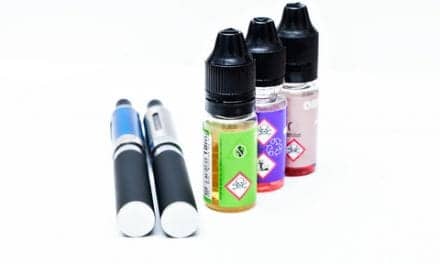The use of flavored e-cigarettes among children and teens was linked to a decreased perception of the dangers of smoking and a higher risk of becoming a smoker.
The overall perception of smoking was high in 2014 National Youth Tobacco Survey (NYTS) respondents, with more than 90% “agreeing” or “strongly agreeing” that tobacco products are dangerous. But flavored e-cigarette use was associated with a lower odds of perceived tobacco use harm (adjusted OR 0.5; P<0.0001), the researchers reported online in Pediatrics.
Of the survey respondents who reported e-cigarette use within the last 30 days, 60.9% reported using flavored cigarettes. More than half (55.6%) of the middle- and high-school students who smoked e-cigarettes but not traditional cigarettes, and 68.4% of respondents who were both vapers and smokers, reported a preference for flavored vaping products.
And nonsmokers who used flavored e-cigarette products — sold with names such as Candy Crush and Gummy Bear — were nearly six times as likely to state an intention to begin smoking regular cigarettes (adjusted OR 5.7, 95% CI 4.2-7.7) relative to respondents not using e-cigarettes of any kind. Users of nonflavored e-cigarettes also showed a heightened intention to start smoking but to a lesser degree (adjusted OR 3.3, 95% CI 2.4-4.7; P<0.0001 vs flavored e-cigarette users).
More than half of the flavored e-cigarette users not currently smoking cigarettes indicated that they planned to start.
“We found that compared with not using e-cigarettes in the past 30 days, flavored e-cigarette use was associated with higher odds of intention to initiate cigarette use among never-smoking youth, lower odds of intention to quit tobacco use among current-smoking youth, and a lower prevalence of perception of tobacco’s danger among users of flavored e-cigarettes,” researcher Hongying Dai, PhD, of Children’s Mercy Hospital, Kansas City, Missouri, told MedPage Today in an email exchange.









